How To Get A Car Unstuck From Deep Mud
Getting your car stuck in sand or mud is inconvenient and frustrating.
Fortunately, there are several ways to get your vehicle unstuck efficiently and safely.
One is to call for roadside assistance, especially if you're alone.
(Budget Direct Roadside Assistance can help you only if you get stranded on a sealed road that is trafficable by a standard two-wheel-drive recovery vehicle. We won't abandon you, though, and can arrange for a third party to rescue your car at your cost.)
If calling for help is impractical or impossible, don't worry. There are several methods for freeing your car from sand or mud.
The basic principles of vehicle recovery
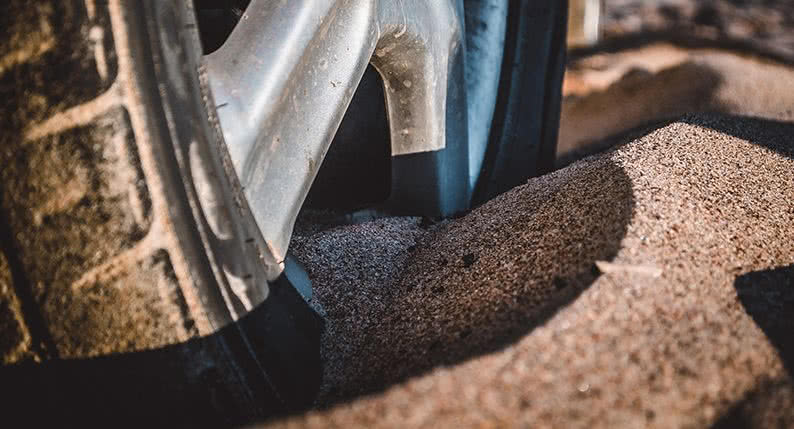
Before you attempt to get your car unstuck, it's important to understand the basic principles of safe vehicle recovery to avoid making the situation worse. Here are a few key tips to keep in mind:
- While it may seem tempting to try to drive your way out of the mud or sand, excessive spinning of your tyres will most likely just dig you into a deeper hole. Continuously revving the engine of a thoroughly stuck car may damage tyres, axles, transmissions, drivelines, and in most instances will only dig the car in deeper.
- If the car is thoroughly stuck, your best option is usually to improve traction by increasing the contact patch that each drive wheel makes with the ground. Following this, you want to use momentum to get to more solid ground.
- Momentum is the key to getting unstuck from sand or mud. Once you start moving, keep the momentum going until you are on more solid terrain.
- Communication is also very important. If you are helping a driver recover from a bogged situation, you need to communicate to them what is happening with the driven wheels.
- Unfortunately, no single method of vehicle recovery is foolproof. The effectiveness of these methods will vary depending on the type of vehicle that is stuck and how severely the vehicle is stuck. Therefore, trial and error will often be necessary to get your car unstuck.
Take stock of the situation
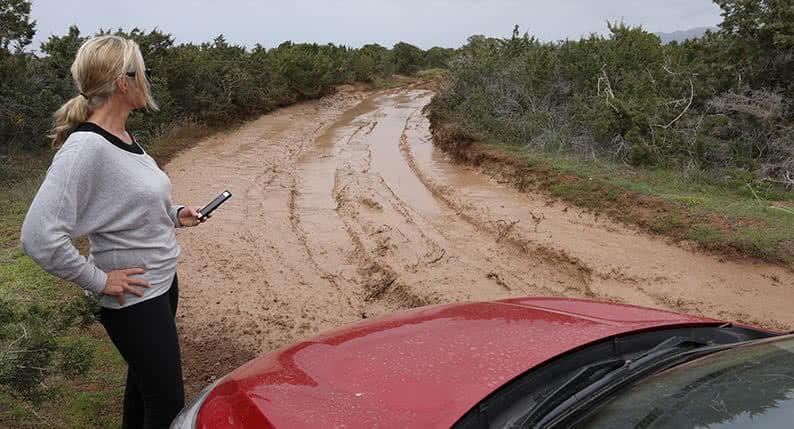
To have the best chance of getting your vehicle unstuck, it's important to understand the severity of the situation. If it is possible to safely exit your vehicle, there are a few details that can indicate the correct course of action to follow. If the wheels have been buried deep enough that the axle or chassis now rests on the ground, then you will probably have a more difficult time getting the vehicle unstuck. Other warning signs include having more than one wheel – especially drive wheels – sunken into the loose, slippery material, or if the vehicle is teetering by its frame enough to alter its weight distribution, thereby reducing traction on the drive wheels.
Two vehicle snatch method
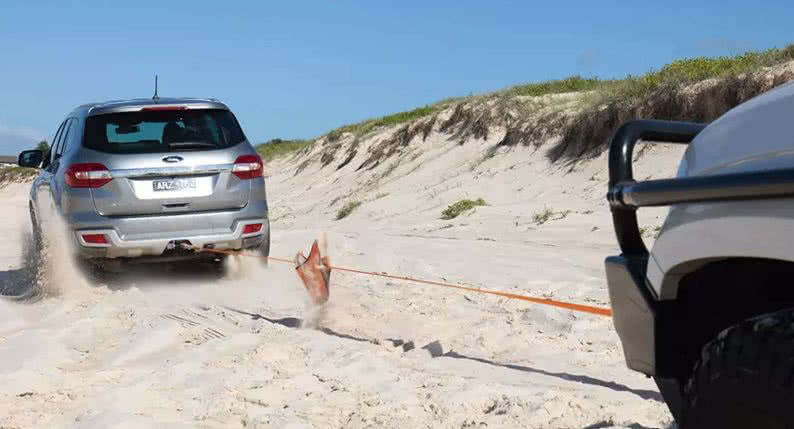
Now that you have taken stock of the situation, it's time to attempt to recover your vehicle. First up is the two vehicle snatch method. While this method can be effective if executed correctly, there are a few safety precautions that you need to take before attempting it. For starters, the recovery vehicle should have 4×4 traction and a locking differential. Further, you should only attempt this recovery method with proper recovery equipment. This includes a 4×4 snatch strap and proper anchor/recovery points. Do not use your vehicle's tow ball, as it can snap off and become a dangerous projectile. Similarly, never attempt this type of recovery with a chain or a rope as they could snap and become a dangerous projectile. Lastly, any onlookers should be well clear of the strap while the recovery is taking place.
To execute the two vehicle snatch method, first, attach the snatch strap to the stuck vehicle's recovery point. Attaching the snatch strap can vary from vehicle to vehicle, however, most snatch straps will usually come with a safety manual explaining the process, so be sure to consult this to ensure the strap is correctly attached. Next, lay the snatch strap on the ground in front of the stuck vehicle, and back the rescue vehicle up until there are only a few metres of slack in the strap. Then, attach the snatch strap to the rescue vehicle and place the strap damper over the middle of the strap – this will remove some of the power from the snatch strap if it breaks.
Before you attempt the rescue, ensure the drivers of both vehicles can clearly communicate with each other. Now it is time to attempt the rescue. On a previously agreed signal – usually a countdown from three – the rescue vehicle should accelerate forwards in a straight line in a controlled manner (i.e. not at full speed). The snatch strap should then stretch to its full extension and rebound, catapulting the stuck vehicle out of the sand or mud. Once the driver of the stuck vehicle feels the strap pulling their vehicle forwards, they should accelerate in a straight line, matching the rescue driver's speed. It may take a few attempts to gain sufficient momentum, so repeat this process as necessary.
The rocking method
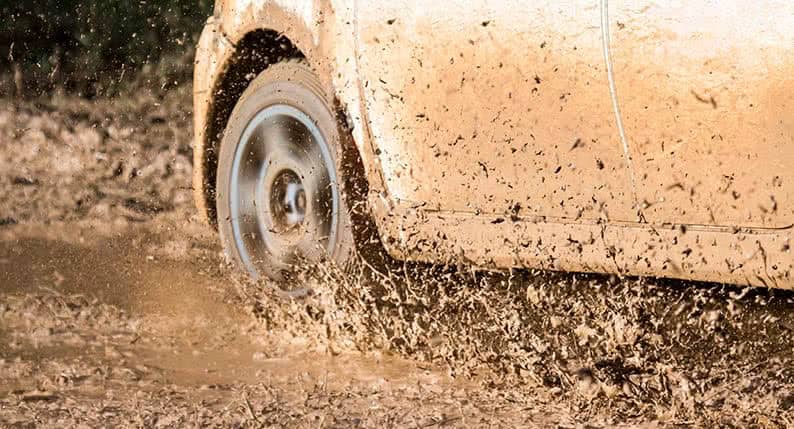
If the two vehicle snatch method is unsuccessful, there are a few other methods you can try to get your car unstuck. Next is the rocking method. As we have already mentioned, momentum is key to getting your car unstuck. Accordingly, the rocking method is exactly what it sounds like: rocking your car backwards and forwards to gain momentum.
This method relies on your vehicle being able to move at least slightly forwards and backwards, so if your car is thoroughly stuck, this method is unlikely to be effective.
Essentially, you accelerate slightly forwards, then put your car into reverse and roll backwards, then switch back to drive and accelerate forwards again. Select the lowest gear for an automatic transmission, and second or third gear for a manual transmission. Make sure you accelerate gently, trying to build momentum without spinning the wheels in place. As the driver, you should feel when the car begins to gain momentum. Often, you will be able to generate enough momentum to get your vehicle unstuck.
The dig method
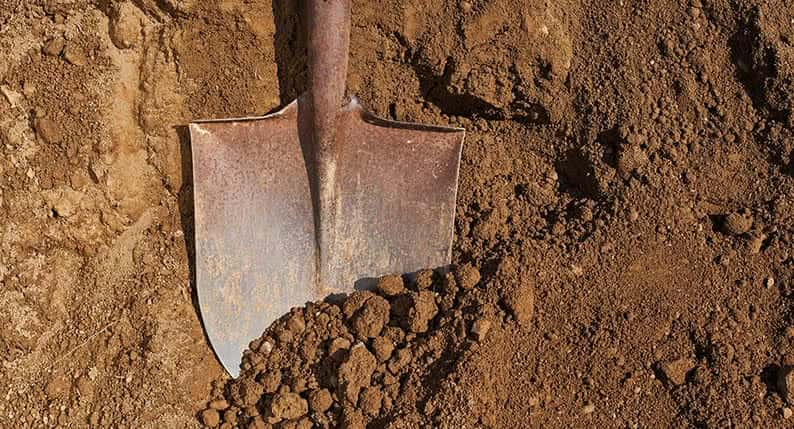
The dig method is fairly self-explanatory, but it can also be highly effective. Basically, grab a shovel (ideally you will have one packed in your emergency kit), and clear as much excess mud/sand as you can from around your tyres. If you don't have a shovel handy, you can try scooping with your hands, or any other materials you have nearby. In theory, this will give you more room to gain momentum and drive your way out.
The random objects method
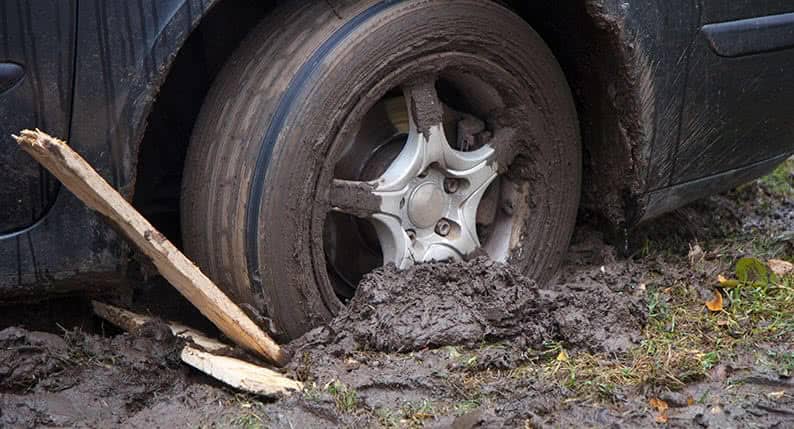
One of the keys to getting your car unstuck is gaining traction. A lot of the time, random objects from your car can help. For example, wedging a car mat under your drive wheels can help you gain momentum and traction. For a rear-wheel drive vehicle, place the mat under the rear passenger side wheel, while for a front-wheel drive, place the mat under the front driver's side wheel. Of course, this can vary depending on your situation. Other items that may help you gain traction include sticks, leaves, gravel, rocks, and sand. Try placing these items in front of your wheels and slowly accelerating forwards.
Surprisingly, cat litter is an excellent tool to help you gain traction if you ever get stuck. As such, it's worth keeping some on-hand so that you're prepared in case of emergency.
The increase weight method
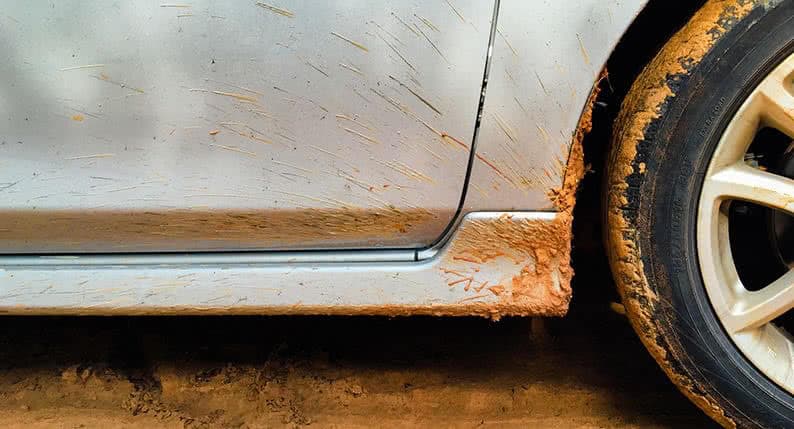
Another method to get your car unstuck is redistributing weight in the vehicle by placing extra weight over the drive wheels. If you are able to push this weight past the wheels (particularly effective for rear-wheel drive vehicles) you may be able to cantilever the weight by increasing downward force.
For rear-wheel drive cars, place any heavy objects you can find in the back seat or boot. For front-wheel drive cars, place any heavy objects in the passenger side footwell. Be sure to never place any heavy objects on the car's bonnet. Similarly, never let people sit on the bonnet in an attempt to add weight to the vehicle, as this can be dangerous.
The drop tyre pressure method
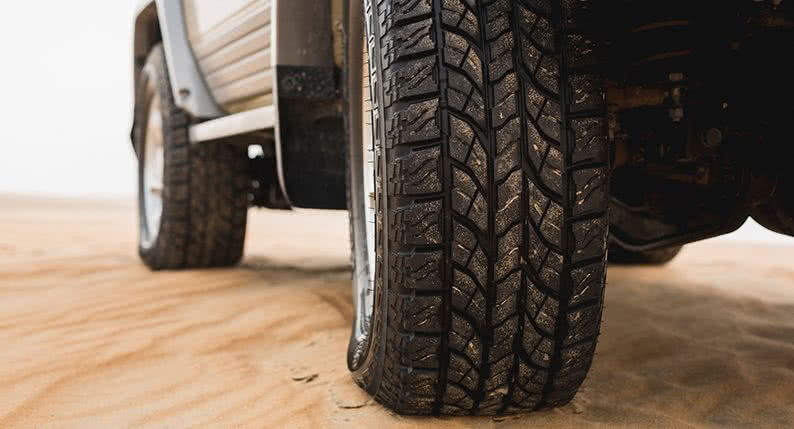
While this method should be used as a last resort, dropping tyre pressure can sometimes help you to get unstuck from sand or mud. Nevertheless, you should only attempt this method if you have access to a tyre pump or compressor, as it can be unsafe otherwise.
By decreasing your tyre pressure, you will increase tyres' surface area. In turn, this increases the tyres' contact patch with the sand or mud. Having more of your tyres' tread in contact with the surface may help you gain the traction required to get unstuck.
Of course, be sure to re-inflate your tyres to the recommended pressure once you have successfully recovered your vehicle.
Key takeaways
- Gaining momentum and traction are key to getting your vehicle unstuck.
- Finding the most effective method usually involves trial and error.
- While Budget Direct Roadside Assistance cannot rescue your car if it's bogged in mud or sand, we can arrange for a third party to rescue it at your cost.
How To Get A Car Unstuck From Deep Mud
Source: https://www.budgetdirect.com.au/roadside-assistance-australia/guides/how-to-get-your-car-unstuck-from-mud.html
Posted by: coopergreplive.blogspot.com

0 Response to "How To Get A Car Unstuck From Deep Mud"
Post a Comment